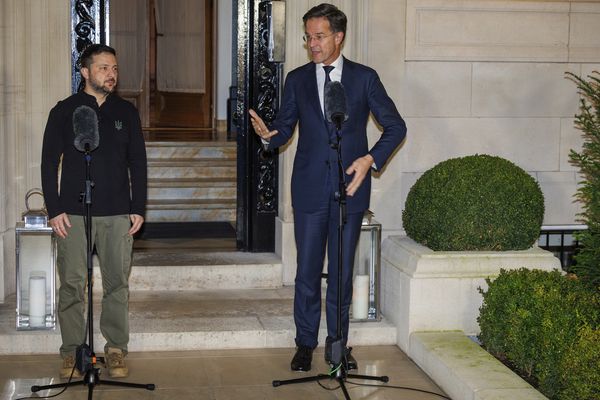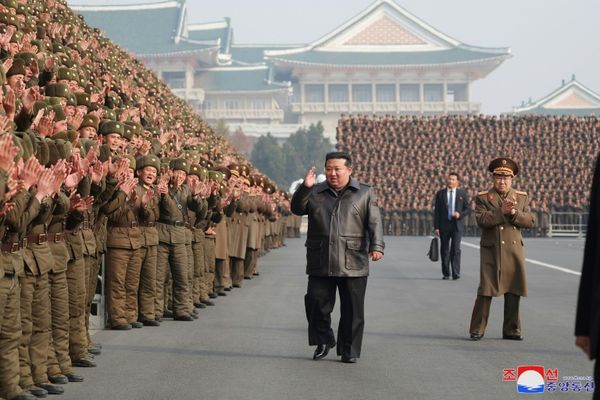
“COVID-19 hoax is not meant to be cured, it is meant to be continuous.”
This statement is clearly false. Yet it’s one of the cherrypicked social media posts that critics used to claim that the Australian government was overzealously censoring the “truth” during the pandemic.
For the past few months, lists of Facebook posts and tweets flagged for containing COVID-19 misinformation by the Department of Home Affairs and Department of Health have been used by conservative politicians and news outlets to mount the case that government and big tech colluded to stop dissent about the pandemic’s handling.
But a closer inspection of the documents not only demonstrates that these claims are over-egged, misleading and sometimes outright wrong, but that the federal government was unable to get tech companies to do anything against people spreading COVID-19 conspiracy theories, posts leading to death threats, and people impersonating health workers.
It was the opposite of what critics claimed: the Australian government was often unable to convince Meta (Facebook’s parent company) and Twitter to take action, even when there was a clear risk to Australians.
#TheAustralianTwitterFiles
Since May this year, South Australian Liberal Senator Alex Antic received multiple documents from the Department of Home Affairs about COVID-19 misinformation monitoring on social media. They show 4214 social media posts over three years were flagged by contractors as worth investigating for whether they should be referred to the relevant tech company or other government agencies.
“An Australian government department has been exposed as a key player in the COVID censorship industrial complex,” Antic tweeted as he compared the documents to the Twitter Files, a series of document dumps from Twitter under Elon Musk.
Coverage of these documents distorted what they revealed. In an article for The Australian titled “Antic probe reveals Canberra silenced 4213 Covid post”, Chris Kenny wrongly argued that the Department of Home Affairs-flagged posts were raised with tech companies to either “restrict or censor”.
In fact, some were referred to other departments for action (like, for example, a March 16 2020 scam SMS that downloaded malware onto the recipient’s phone under the auspices of accessing emergency payments that was referred to the Australian Cyber Security Centre) and therefore not for restriction or censorship.
And, importantly, even those that were referred weren’t necessarily acted upon. Home affairs later confirmed that 2702 of the 4214 posts — about two-thirds — were removed or had their distribution reduced.
What’s the significance of this number? It shows that home affairs wasn’t forcing tech companies to take this content down. What it was doing was drawing these companies’ attention to what home affairs staff believed was content that broke the platforms’ own rules. While home affairs had a different pathway — they were able to email rather than use the companies’ in-platform reporting tools — the standards for action against the content were the same as if anyone else reported it. And clearly tech companies didn’t feel the need to comply. In a third of cases, Meta, Twitter or other tech companies refused to do anything! If the argument was that tech companies either colluded or were made to comply with government orders, the evidence suggests that there was plenty of opportunity for them to disagree and act as a check and balance.
It also demonstrates just how small a role home affairs played in big tech’s COVID-19 misinformation efforts. According to Meta’s 2023 transparency report, the company removed 381,000 pieces of health misinformation content in Australia in the same three-year period. Even if all of those 2702 posts were from Meta’s platforms (they weren’t) and we assumed they were all removed (they weren’t), it still wouldn’t be 1% of all the posts removed by the tech company. Hardly a massive influence.
Posts about lockdowns, vaccines and George Orwell
A further set of documents from the Department of Home Affairs obtained by Antic gave insight into the 4214 posts that were flagged. The senator said that this “confirmed his worst fears,” according to a further report in The Australian by Kenny.
“Many of 4000 social media posts secretly censored by government during the height of the COVID-19 pandemic contained factual information and reasonable arguments rather than misinformation, new documents reveal,” Kenny wrote.
However, the article cited four examples:
- An Instagram post claiming “COVID-19 vaccine does not prevent COVID-19 infection or COVID-19 transmission” that was removed after being flagged. Australia’s Department of Health writes that vaccination “can help reduce the onward transmission of Omicron subvariants”.
- An April 2021 tweet that read “COVID-19 was released or escaped from Wuhan laboratory in China and that it was funded by the US government” that was not removed by Twitter.
- A tweet arguing that “lockdowns are ineffective” that was not removed by Twitter.
- A Facebook video of someone removing government signs about social distancing that was taken down as it violated Meta’s rules around following public health orders.
Similarly, The Spectator Australia’s Rebecca Weisser wrote that one post was flagged for “misrepresenting a George Orwell quote”. What she failed to mention was that the misquoted statement from Orwell was calling COVID-19 a hoax and encouraged people not to get tested. (Even still, the post was not removed from Facebook.)
Based on the best evidence provided, there’s nothing to suggest that the federal government was able to silence dissent about COVID-19 restrictions. Yes it was involved in flagging posts. But there’s no proof among the 4214 posts that any correct information was taken down or that the government forced tech companies to do something that they wouldn’t have done if any other Facebook or Twitter user had flagged them. The federal government wasn’t infringing on free speech — it was in fact exercising its own speech.
‘End result is we cop the abuse and death threats’
What these documents actually suggest is that the federal government was often unable to get tech platforms to remove misinformation. This is made abundantly clear in another trove of documents released by the Department of Health about its correspondence with Meta and Twitter.
It includes emails from department staff showing they had reported tweets made by former MP Craig Kelly (seemingly through the standard reporting process available to any other user) containing misinformation such as accusing Meta of killing people for removing false claims about COVID-19 treatments. These reports did not lead to Twitter taking down Kelly’s posts or removing his account.
Health staff also struggled with Meta to get content removed that was seemingly harmful. The tech company said it wouldn’t take down the Facebook profile of someone who falsely listed themselves as working at the Department of Health and used it to spread vaccine misinformation.
After the tech company removed nine posts from a group whose entire purpose was in “breach of Facebook’s policies for COVID misinformation”, according to a Health Department staff member, a Meta employee defended the decision to keep the group on the platform by saying that it would be “demoted and can eventually be removed” but not yet.
In one instance, department employees unsuccessfully begged Meta staff to take down a Facebook post from a former Australian politician that encouraged conspiracy groups to ring up Australia’s medical regulator, the Therapeutic Goods Administration.
“While the posts don’t specify what needs to be said, the end result is that we cop the abuse and death threats,” one staff member pleaded.
In their crusade to show how the government and tech worked together to stop any dissent, the cynics of the government’s COVID-19 restrictions have ironically proven the opposite. These documents show how lies and conspiracy theories are often allowed to proliferate on social media causing harm, even as the federal government tries to stop them.
When you peel back the facade of protecting “free speech”, it becomes nakedly obvious that this whole campaign is about protecting the right of the powerful to lie without anyone or anything stopping them.







